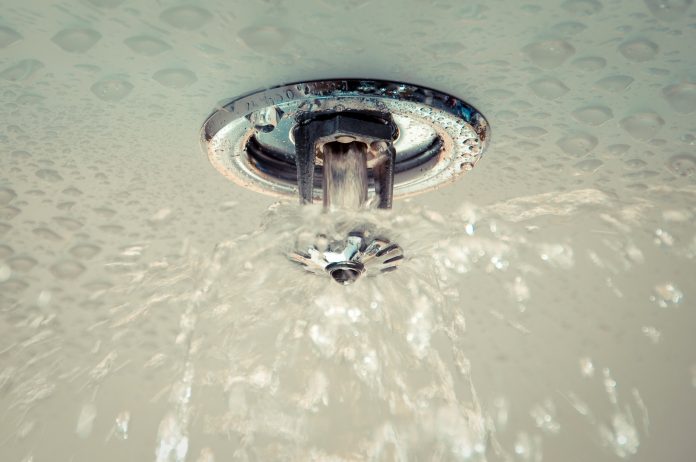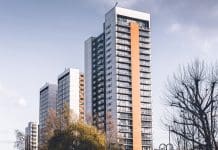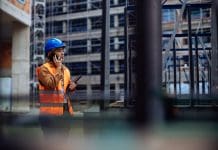Tilden Watson, head of education at Zurich Municipal, outlines the case for making the installation of sprinkler systems mandatory in all new build and majorly refurbished schools
In the UK, there are still around 1,000 fires in school premises every year with the larger fires costing on average over £3m, and in some cases over £20m. This figure shows that fire risk is still a real threat and, while there were no fatalities from school fires in the eight years up to 2017-18, there were 244 casualties, according to official figures.
Figures also show that 673 schools have been built and open in the UK since 2011 and just 15% were fitted with sprinkler systems, even though the evidence from Chief Fire Officers Network suggests that sprinklers are 99% successful in putting out fires where they have been activated.
It’s not just the financial cost but the impact on education that largely goes unreported. Here at Zurich, we have witnessed how a fire’s devastating effects spread much further than a school’s budget. It disrupts the lives of pupils and school staff, often forcing them to retreat to temporary classrooms for considerable periods of time while everything from examination papers, school records, student submissions, university applications, as well as a lifetime of teaching notes and aids can be lost forever.
Schools are not just attended by children; they are community hubs that are used outside of school hours by a range of societies and organisations. The loss of these spaces can have significant impacts on local communities lacking accommodation for night classes and local events while the school also loses the rental income.
Preventative action and the mandatory installation of sprinklers, as well as the removal of combustible materials, could eliminate the impact of loss and disruption to the community, and significantly reduce the cost to the taxpayer for repairs. That’s why Zurich has repeated our call for the government to regulate and provide improved guidance that clearly requires the mandatory implementation of sprinklers in all new build and major refurbished schools.
A change in government legislation to make sprinklers in schools mandatory could not only help protect children while they are in school, it often contains the fire to the room it starts in when it happens out of school hours. Not only does this minimise the level of damage caused, it also negates the aftermath, which often leads to months or even years of disruption for children’s education while the school is repaired.
Zurich has recently published results of its school property surveys, which show that two-thirds (67%) of English schools are rated as ‘poor’ for fire protection systems. In Scotland, where sprinkler systems are legally required in all new and major refurbished schools, almost three in 10 (29%) of Scottish schools are rated ‘excellent’ for fixed fire protection systems, in stark contrast to English schools, where only one in 20 (5%) achieved the same rating, which shows a growing gap between the two countries.
Disparity with Scotland & Wales
The installation of sprinklers in new build and major refurbished schools is mandatory in Scotland and Wales but not in England and Northern Ireland. It is concerning that England’s minimum protection standards for schools fall far below those of Scotland and Wales.
It is essential that all new school projects (all new build, plus significant refurbishment schemes) include fire sprinklers for the protection of the property and, indeed, in terms of education continuity. Fires within school premises are a UK-wide problem and we would emphasise with regulations defining the legal levels of minimum protection required.
Property safety baseline
Life safety is, clearly, the paramount concern of all stakeholders but the surest way to ensure resilience of the built environment, as well as protecting firefighters responding to fire events, is to ensure that all schools are built to a property protection baseline. A school built to a life safety baseline, which is currently the minimum standard according to the Building Regulations, more often than not results in a total fire loss.
Compliance only with Building Regulations offers a false sense of security. By building to a property protection baseline, which would ultimately require the installation of sprinklers, schools will be able to withstand a fire, maintain structural integrity and significantly reduce damage to buildings.
It is important to consider that over the lifecycle of an asset, the cost of installing sprinklers can often be offset by reduced insurance premiums. The additional benefits of designing to a property protection baseline is that the social and economic costs of a fire are subsequently minimised.
Design freedoms
The provision of sprinklers in educational buildings should not only to be considered beneficial in terms of property protection but can, subject to robust and appropriate design/approvals, allow greater design freedom.
Conventionally, building design must meet the prescriptive requirements of the current Building Regulations, together with their Approved Documents/Technical Standards, including BB100 – Design for Fire Safety in Schools (where applicable).
However, such requirements have often dictated to designers the way a facility can be built and, in many cases, limit the internal layout. The provision of a correctly specified, designed and installed sprinkler system from the outset has the potential to offer increased freedom in this area.
Areas of freedoms that could be considered, subject to appropriate sprinkler system design and agreement with statutory bodies and the necessary statutory approvals:
- Flexibility in fire compartment size.
- Increased compartment sizes (away from the conventional 800m2 in non-sprinkler protected buildings).
- Compartment sizes often limit aspects of the design of an education facility, particularly in relation to large open multi-function spaces, ie atria spaces.
- Reduced Fire Resistance to elements of structure is a commonly accepted trade-off. This often means providing only 30 minutes fire resistance to the structure of the building, as opposed to 60 minutes in many two-storey premises. Dependant on the materials used, this can offer capital savings by providing a greater choice in the materials used, or standard of protection provided etc.
The main objective of compartmentation is to reduce the potential for fire to develop rapidly and affect a large proportion of, or indeed the entire, premise. The Building Regulation Approved Documents and Technical Standards set out requirements on this important aspect but the guidance is for minimum standards relating mainly to the protection of life.
Clearly, the provision of effective compartmentation is essential in order to ensure adequate life safety provision, but also to avoid extensive and rapid fire spread and resultant damage – including that of extensive smoke damage.
There may be additional aspects of flexibility in design that provision of full sprinkler protection would afford, more in relation to life safety design aspects.
Future outlook for sprinkler systems
The key challenges for the future are to continue to influence and persuade all stakeholders of the importance of addressing the issue of schools fires through highlighting their impact, whether or not they have had or are likely to have a direct experience of fire and ensuring that school leaders and local authority decision-makers are equipped with accurate, concise and relevant guidance about fire prevention and management in order that they can make informed decisions about the need for sprinkler protection and to educate stakeholders that if a fire does happen, cost-savings are evident in terms of reducing the scope and cost of damage and the resulting reduction in other indirect costs such as less disruption and remedial work.
With the Building Bulletin 100 consultation results due to be published shortly, we have probably a once-in-a-generation opportunity to change the law to protect school communities from a devastating impact of fires. Let’s not wait for a real tragedy to happen before taking action and make sprinklers a legal requirement now for the long-term benefit.
Tilden Watson
Head of Education
Zurich Municipal
Tel: +44 (0)1252 387043
enquiries@zurichtogether.co.uk

















